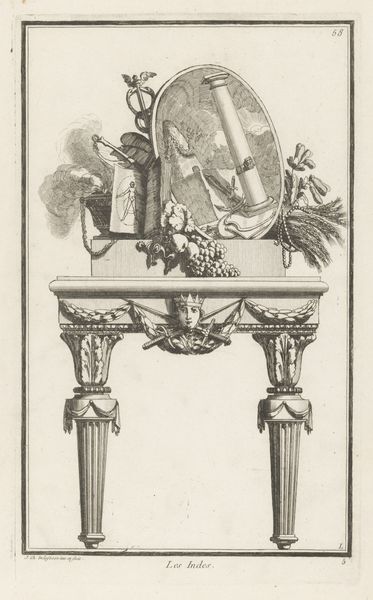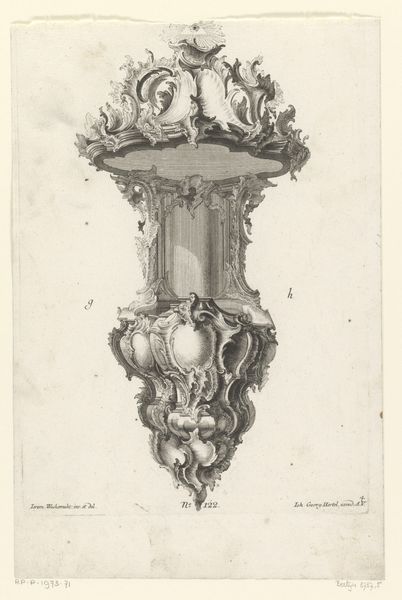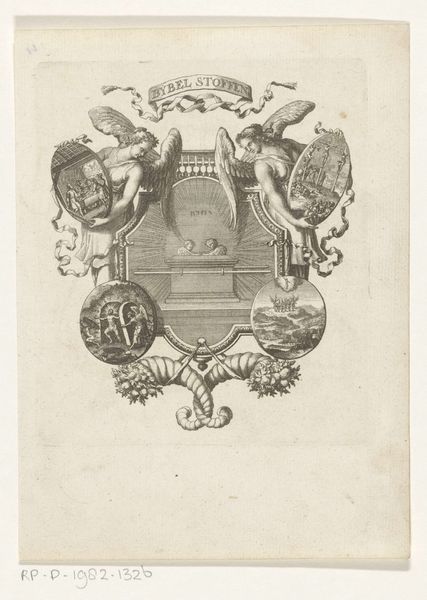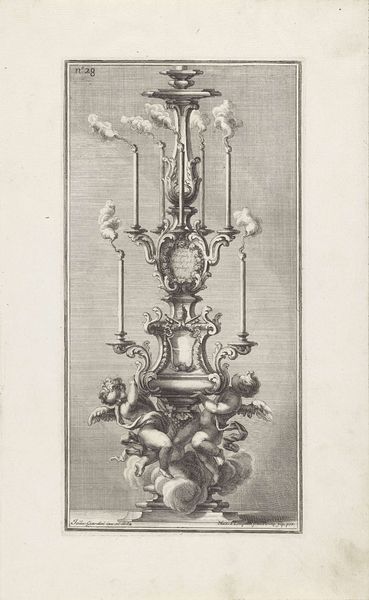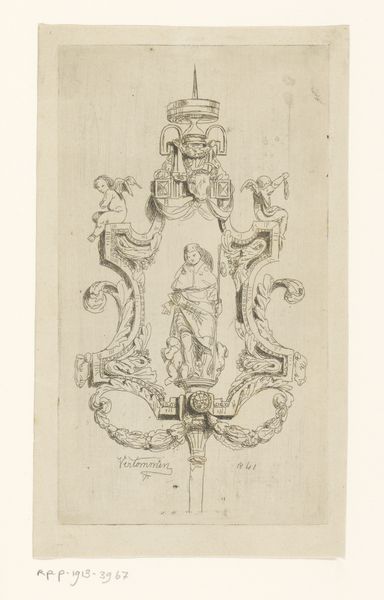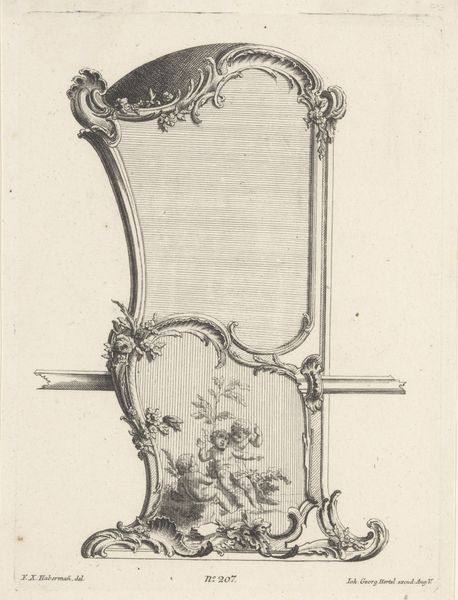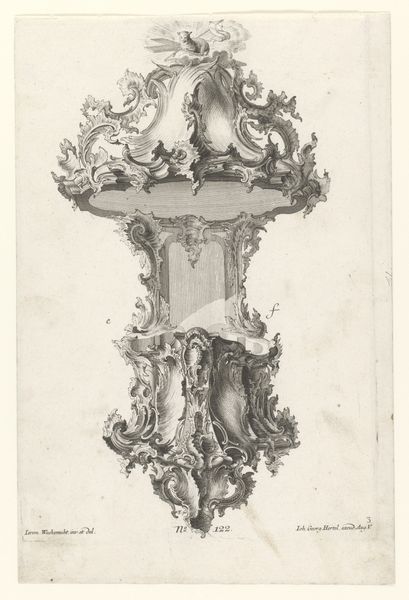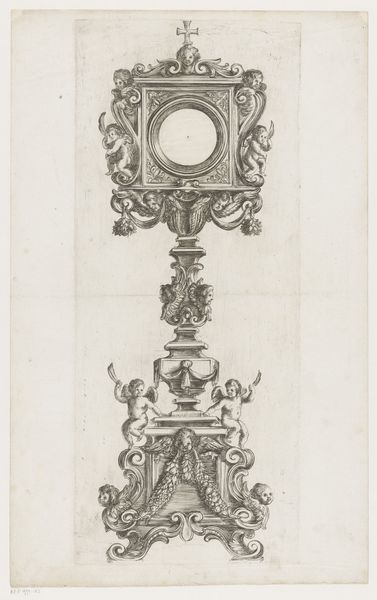
graphic-art, print, metal, engraving
#
graphic-art
#
neoclacissism
# print
#
metal
#
pen sketch
#
old engraving style
#
form
#
geometric
#
pen-ink sketch
#
line
#
history-painting
#
engraving
Dimensions: height 203 mm, width 143 mm
Copyright: Rijks Museum: Open Domain
Editor: This is Willem Bilderijk’s "Grave Monument with the Arms of Bentinck," created in 1781. It’s an engraving; so metal and ink. The detail is amazing, but it feels so stiff, formal, cold even. It is difficult to approach, visually. What historical context can unlock this image for us? Curator: It’s crucial to recognize Neoclassicism’s ambition. Consider the period: the Enlightenment, the rise of reason. The artist deliberately draws upon classical motifs—the geometric form, the weaponry—to evoke the gravitas and power of ancient republics. Bilderijk isn’t just making a pretty picture; he’s crafting a statement about ideal civic virtue. Do you think that ideal translates effectively in the image itself? Editor: Well, I see what you mean about virtue, but I wonder who it's "virtuous" for. It's very clearly celebrating wealth and military strength, wouldn’t you say? Whose story is this monument really telling, and whose is it ignoring? Curator: Precisely! Think about the function of these grand displays. They visually reinforced the existing social hierarchies. The Bentincks would have displayed their lineage, and consequently, their right to wield power, contributing to a visual culture of deference. It's also crucial to think about *who* this image was for; it’s purpose within a specific, exclusive social sphere is vital. Editor: So, it’s not just about the aesthetic, but about how art is actively used to create and maintain social power? Curator: Absolutely! Art isn't created in a vacuum. Analyzing these pieces with a social lens shows us how deeply entwined art is with societal values and power dynamics. Editor: This makes me think differently about how art, even seemingly formal, stiff engravings, can be such powerful political statements. Curator: And understanding that power is key to appreciating its complex history.
Comments
No comments
Be the first to comment and join the conversation on the ultimate creative platform.
